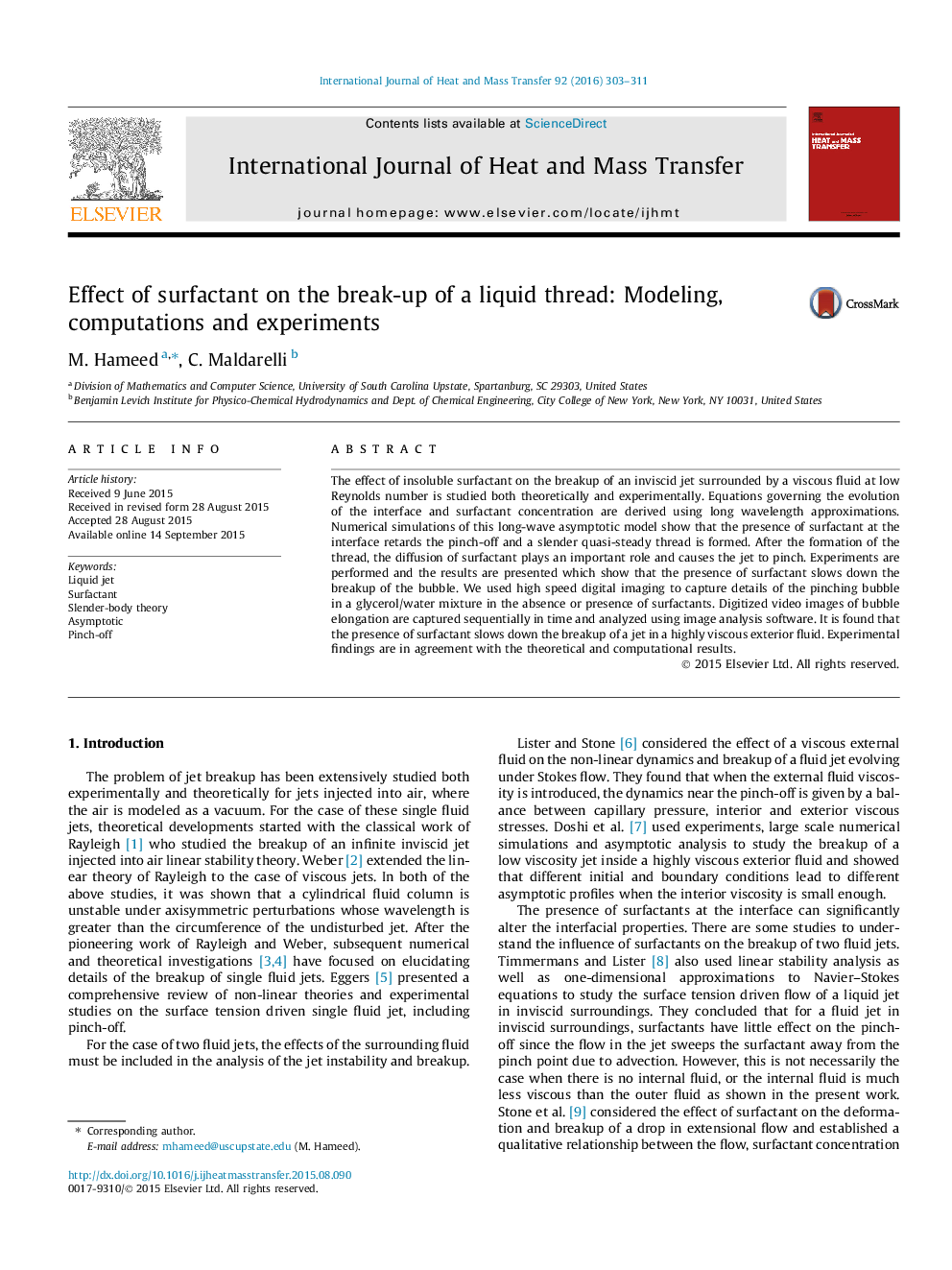| کد مقاله | کد نشریه | سال انتشار | مقاله انگلیسی | نسخه تمام متن |
|---|---|---|---|---|
| 656538 | 1458050 | 2016 | 9 صفحه PDF | دانلود رایگان |
• Simple mathematical model is derived to study a liquid thread breakup using long wave length approximations.
• Model captures all the features as compared with full numerical simulations.
• The presence of surfactant retards the breakup process by resulting in a thin and a long neck.
• It is found that surfactant diffusion plays an important role in the pinch-off.
• Experimental results support the predictions of the theoretical model.
The effect of insoluble surfactant on the breakup of an inviscid jet surrounded by a viscous fluid at low Reynolds number is studied both theoretically and experimentally. Equations governing the evolution of the interface and surfactant concentration are derived using long wavelength approximations. Numerical simulations of this long-wave asymptotic model show that the presence of surfactant at the interface retards the pinch-off and a slender quasi-steady thread is formed. After the formation of the thread, the diffusion of surfactant plays an important role and causes the jet to pinch. Experiments are performed and the results are presented which show that the presence of surfactant slows down the breakup of the bubble. We used high speed digital imaging to capture details of the pinching bubble in a glycerol/water mixture in the absence or presence of surfactants. Digitized video images of bubble elongation are captured sequentially in time and analyzed using image analysis software. It is found that the presence of surfactant slows down the breakup of a jet in a highly viscous exterior fluid. Experimental findings are in agreement with the theoretical and computational results.
Journal: International Journal of Heat and Mass Transfer - Volume 92, January 2016, Pages 303–311
